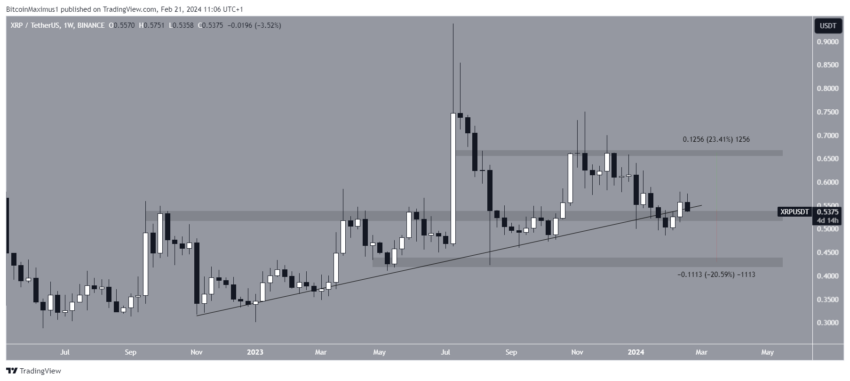
Ripple CEO Brad Garlinghouse thinks that an XRP exchange-traded fund (ETF) is inevitable following the approvals of Bitcoin ETFs. He said that more crypto ETFs could diversify risk, and the SEC’s case against the company has been resolved in ‘all the ways’ the company cares about.
Brad Garlinghouse said it’s natural to expect other crypto ETFs following the approval of Bitcoin ETFs.
Why Bitcoin ETFs Were Just the Start
In January, the US Securities and Exchange Commission (SEC) approved funds tracking Bitcoin’s price directly. The products from Grayscale Investments and others have given institutions regulated exposure to Bitcoin, which Garlinghouse says sets the stage for future products that lower risks.
“I think it only makes sense there will be other ETFs…The sad reality of what we saw with the Bitcoin is, only because the courts forced the SEC’s hand… that we saw [the ETF] finally come to fruition. In my opinion it makes the market safer, more robust. And then its good for the investment community to kind of lean into that,” Garlinghouse said.
Read more: What Is a Bitcoin ETF?
Exchange-traded funds offer investors shares of assets they manage. As the name suggests, these shares are traded on stock exchanges. A market maker buys and sells shares quickly to offset tiny variations in price that occur during day-to-day trading.
An authorized ETF participant helps an ETF issuer decide whether to redeem or create shares based on demand. Asset managers buy Bitcoin when they create shares.
How Courts and the SEC May Affect an XRP ETF
An ETF could be redundant if institutional investors own XRP directly rather than through shares in an ETF. Last July, a judge ruled that sales of XRP to institutional investors were unregistered securities. In that case, the SEC may ask Ripple to register it as such, making it easy for institutions willing to buy XRP and hold the asset directly to get exposure to its price movements.
Read more: Ripple (XRP) Price Prediction 2024/2025/2030
However, the SEC has not provided a clear path to registration. Nor has it given any guidance on how to categorize a crypto security. The agency may also argue for an XRP futures ETF before approving an ETF that tracks the asset directly.
John Deaton, a New York-based lawyer, and Ripple’s counsel, Stuart Alderoty, have criticized the SEC’s XRP litigation. Deaton argued that a crypto’s use determines whether it is a security or not. Following his defense of XRP, Deaton recently entered the race for a seat in the US Senate and said his next targets are “Washington elites.”
“First, it was schoolyard bullies, then it was greedy corporations and the SEC, and now I am taking on the Washington elites,” Deaton wrote.
XRP Near-Term Prospects
The weekly time frame chart for XRP is bullish because of the deviation and reclaim of two long-term support levels: an ascending support trend line and the $0.72 horizontal support area.
In January, XRP seemingly broke down from this confluence of support levels. However, the ongoing increase during the past two weeks caused the XRP price to reclaim and close above these levels last week.

So, the XRP trend is bullish as long as a weekly close below them does not occur. The next resistance is at $0.66, nearly 25% above the current price.
Despite the bullish XRP price prediction, closing below $0.52 can trigger a 20% drop to $0.43.
![]()
PrimeXTB
Explore →
![]()
Coinbase
Explore →
![]()
AlgosOne
Explore →
![]()
Wirex App
Explore →
![]()
KuCoin
Explore →
![]()
Margex
Explore →
Explore more
The post Ripple CEO Brad Garlinghouse Remains Bullish on XRP ETF Amid SEC Challenges – Here’s Why appeared first on BeInCrypto.


